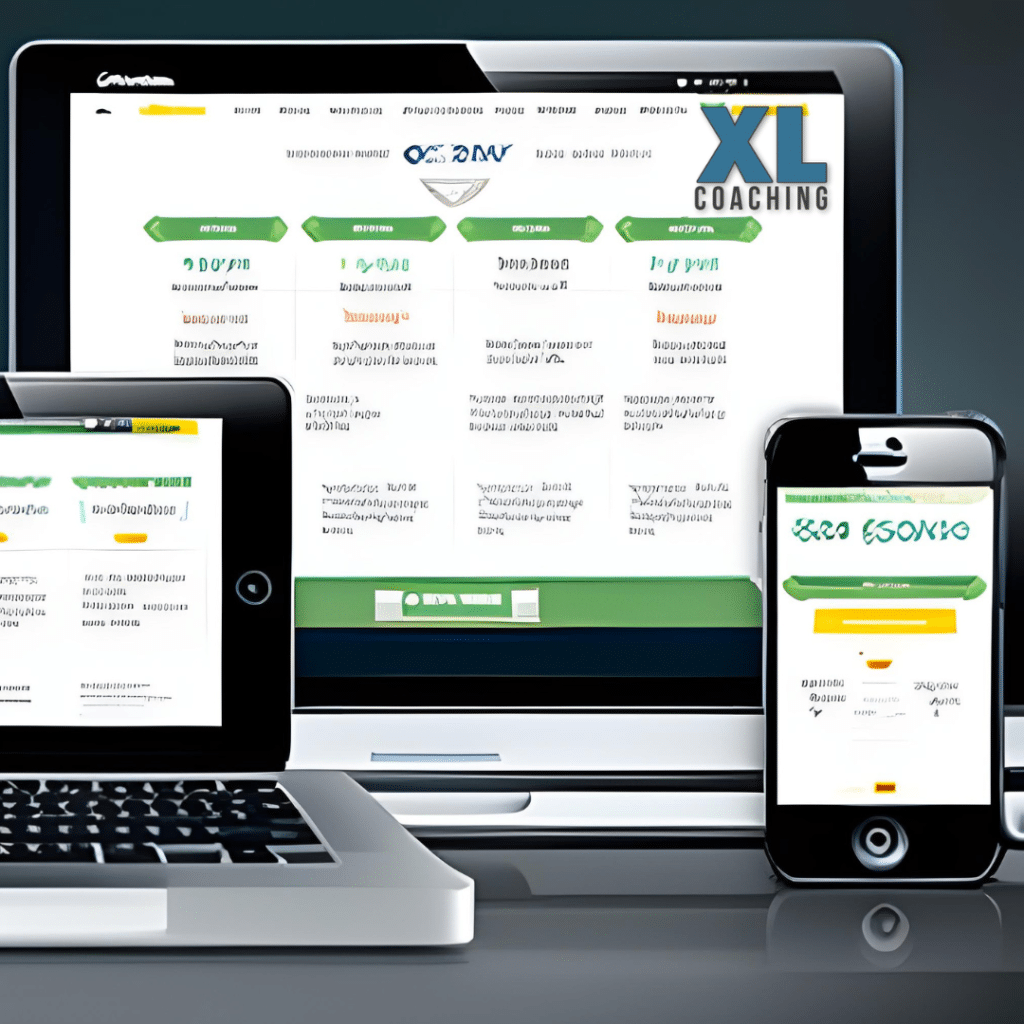If you own a website, you may have heard the term “responsive website design” thrown around. But what does it mean, and why is it so important? In this article, we will explore the benefits of responsive website design and why your website needs to be mobile-friendly.
Introduction: What is Responsive Website Design?
Responsive website is a web design approach that creates a site that is optimized for different devices, including desktop computers, laptops, tablets, and smartphones. This approach allows the website to adapt its layout and content to fit the screen size of the device on which it is being viewed.

100% FREE REPORT!
"Get Instant Access To My Top 10 Coaching Resources To Kick-Start Your Coaching Business"
Simply enter your email below so we know where to send it...
Responsive design uses a combination of flexible grids, images, and CSS media queries to create a site that can be viewed on any device without compromising the user experience. The result is a site that is easy to navigate, loads quickly, and looks great on any device.

Benefits of Responsive Website Design
There are many benefits of having a website design. Let’s take a look at some of the most significant benefits:
1. Improved User Experience
One of the primary benefits of responsive design is that it creates a better user experience. With a responsive site, visitors can easily navigate your site, read your content, and access your services or products, regardless of the device they are using. This means that users are more likely to stay on your site, engage with your content, and make a purchase or sign up for your services.
2. Increased Mobile Traffic
More and more people are accessing the internet on their mobile devices, and having a responsive design is essential to capturing this traffic. With a responsive site, your website will be optimized for mobile devices, making it easy for users to access your site and engage with your content.
3. Better Search Engine Rankings
Search engines like Google prioritize websites that are mobile-friendly in their search results. This means that having a responsive website can improve your search engine rankings, making it easier for users to find your site.
4. Cost-Effective
Having a responsive website design can be more cost-effective than creating separate sites for desktop and mobile devices. With a responsive site, you only need to create and maintain one site, which can save you time and money in the long run.
5. Increased Conversion Rates
A responsive website design can lead to increased conversion rates. With a site that is optimized for different devices, users are more likely to engage with your content, sign up for your services, or make a purchase. This means that a responsive site can help increase your bottom line.
6. Future-Proof
As new devices are released and technology advances, having a responsive website design ensures that your site will be future-proof. A responsive site can adapt to new devices and screen sizes, making it easy to keep your site up-to-date without having to overhaul your design.
FAQs
Q1. What is the difference between a responsive website design and a mobile app?
A responsive website design is a website that is optimized for different devices, while a mobile app is a standalone application that is downloaded onto a device. While both a responsive website and a mobile app can provide a great user experience, they serve different purposes.
Q2. Do I need a responsive website design if I don’t have a lot of mobile traffic?
Yes, having a responsive website design is still important even if you don’t have a lot of mobile traffic. With more and more people using mobile devices to access the internet, it’s essential to have a site that is optimized for different devices.
Q3. Can I use a separate mobile site instead of a responsive website design?
While it is possible to create a separate mobile site, it is generally not recommended. A separate mobile site can be costly to create and maintain, and it can also create issues with duplicate content, which can negatively impact your search engine rankings. Additionally, a separate mobile site may not provide the same user experience as a responsive site, which can lead to decreased engagement and conversion rates.
Q4. How can I tell if my website is mobile-friendly?
You can use Google’s Mobile-Friendly Test to determine if your website is mobile-friendly. Simply enter your website’s URL, and Google will analyze your site and provide you with a report that includes suggestions for improvement.
Q5. Do I need to create different content for mobile devices?
No, you do not need to create different content for mobile devices. With a responsive website design, your content will automatically adapt to fit the screen size of the device on which it is being viewed.
Q6. How can I make my website more mobile-friendly?
To make your website more mobile-friendly, you can:
- Use a responsive website design
- Optimize your images and videos for mobile devices
- Ensure that your site is easy to navigate on a mobile device
- Minimize the use of pop-ups and other elements that can be difficult to interact with on a mobile device
- Ensure that your site loads quickly on a mobile device
Conclusion
In conclusion, having a responsive design is essential for any business or organization that wants to succeed in today’s digital landscape. With a responsive site, you can provide a better user experience, capture more mobile traffic, improve your search engine rankings, increase conversion rates, and future-proof your site. So, if you haven’t already, it’s time to invest in a website design.
